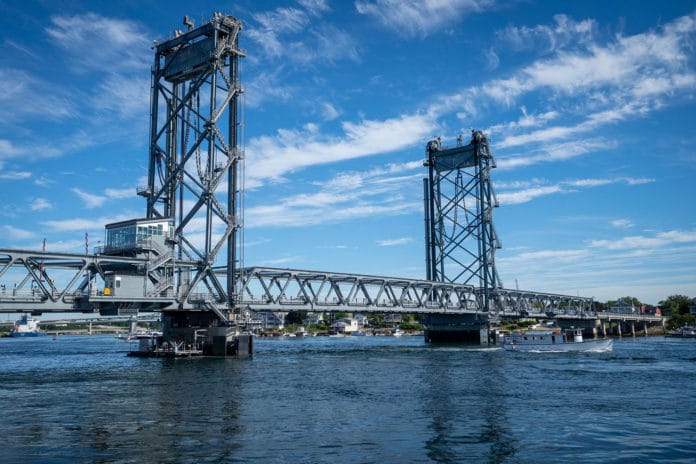University of New Hampshire (UNH) engineers have transformed a busy vertical-lift bridge into a living laboratory that collects and communicates information about bridge health, as well as the health of the surrounding environment.
The Memorial Bridge which has been dubbed a “living bridge,” links the Piscataqua River, connecting Portsmouth, New Hampshire to Kittery, Maine. It has been outfitted with data sensors that have transformed it into a self-diagnosing, self-reporting “smart” bridge.
“We call it a ‘living’ bridge because it can talk to us and provide valuable information about its health—the stress it deals with, the ease at which it moves, what’s happening around it and even under it in the Piscataqua River,” said Erin Bell, associate professor of civil engineering and principal investigator of the Living Bridge Project. “This bridge is not just for getting us across the water, it can teach us so much more about the world around us.”
The bridge is now equipped with 40 different self-diagnosing sensors that can communicate information about the stresses the bridge encounters, its structural performance, tower behavior during bridge lift, acceleration and strain, traffic patterns, sea level, and tidal information and weather conditions.
It will also provide bridge design engineers unique and innovative information to help create the next generation of bridges with maximum safety, reliability, and efficiency.
“Building a new bridge can cost communities millions of dollars, so there is interest in exploring ways to get bridges to do more than just transport people and goods,” said Bell.
The team expanded the project below the bridge and built a floating platform that is secured to the pier underneath the bridge. This floating platform, which rises and falls with the changing tides, includes a weather station and sensors that collect data about water conditions.
A tidal turbine is also installed on the platform to test whether the Piscataqua River, which is considered one of the fastest navigable rivers on the Eastern seaboard, could be a viable renewable energy alternative. Because the Piscataqua River is one of the fastest navigable waterways on the Eastern seaboard, it made sense to try and explore the use of the river’s tidal waters.
“What is exciting about this is that tidal energy can be very predictable,” said Martin Wosnik, associate professor of mechanical engineering. “Unlike solar panels, which can be unreliable due to cloudy days or bad weather, tidal energy is more stable because we can predict the tides well into the future.”
The data collected from the sensors and the turbine may also eventually be used to create a phone app, letting users learn about both the bridge and its environment. Also, the information collected from the sensors and the turbine is being made available on the project’s website to other researchers and forms the basis of a teaching tool for K-12 science projects.
“This has been an amazing opportunity to shine a light on the larger role of infrastructure and how it can engage the community,” said Bell. “Our goal was to think about how all of these things come together to ensure that we are learning from the bridge, educating the public and inspiring students, not just for the next bridge build but for the next generation.”
The project is a collaborative effort led by UNH with the New Hampshire Department of Transportation, the National Science Foundation, and the U.S. Department of Energy.
